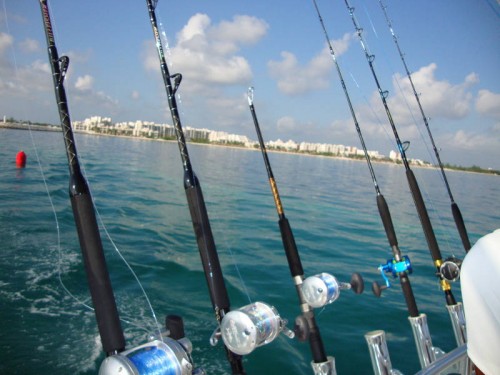CANCUN, Q. Roo — Sportfishing in Cancun has become a very important tourism product with the potential annual economic impact of at least 60 million pesos (USD $3.3 million) and nearly 120 vessels devoted solely to that activity, city officials said.
Francisco Lopez Reyes, director of the municipal tourism office of the Benito Juarez municipio, which includes Cancun, said that sportfishing in Cancun has developed as one of the most important in the country, along with Los Cabos and Puerto Vallarta. He said Cancun slowly is gaining attention as a destination for yachts and sportfishing, and this has been achieved thanks to events and tournaments that have national and international appeal.
Lopez Reyes stressed that the implementation of a “catch and release” system allows many tourists who like sportfishing and chose Cancun to spend their holidays here and hire any of the services involved in this activity.
The local official said that as part of the strategy to position Benito Juarez among the preferred international destinations for sports tourism, the third edition of the Captain Ferrat Cup Fishing Tournament will be held from April 22 to 24. In the presentation of the cup, Lopez Reyes recalled that it was instituted by the current council for its annual keynote event and a competition which adds to the attractions among the wide range of entertainment options that Cancun offers.

Sportfishing is emerging as an international attraction in Cancun and the rest of Quintana Roo’s coast. (PHOTO: cancunboatclub.com)
This time the tournament is expected to involve over 80 boats and about 350 anglers seeking to capture the best species and accumulate the highest score. At a press conference it was announced that the tournament will be held at Maritime Overseas terminal in Puerto Juarez, and will offer more than 800 thousand pesos ($44,000 USD) in prizes for the winners.
He said the sustainable fishing such as the catch and release method protects species such as beaked white and blue marlin, and sailfish. He stressed that an important agenda of international sportfishing tournaments will be taking place in Quintana Roo, mainly in the Costa Maya, Mahahual, as well as in the north in Cancun and the islands of Holbox, Cozumel and Isla Mujeres.
Source: 20minutos.com.mx

